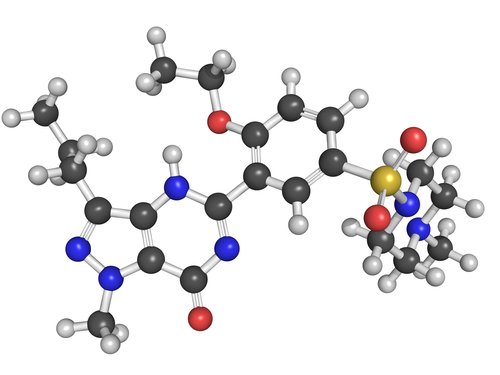Pulmonary Arterial Hypertension Effectively Treated Using Sildenafil

 Hypoxia is the clinical manifestation of loss of oxygen supply in the body, leading to difficulty in breathing. Alveolar hypoxia can cause constriction of the distal pulmonary arterioles, which leads to increased arterial pressure and pulmonary arterial hypertension (PAH). This is a common condition among people living in high altitudes, which makes breathing difficult.
Hypoxia is the clinical manifestation of loss of oxygen supply in the body, leading to difficulty in breathing. Alveolar hypoxia can cause constriction of the distal pulmonary arterioles, which leads to increased arterial pressure and pulmonary arterial hypertension (PAH). This is a common condition among people living in high altitudes, which makes breathing difficult.
Past studies have indicated the use of Sildenafil, a phosphodiesterase 5 (PDE5) inhibitor, in order to reduce pulmonary arterial pressure. Laboratory studies involving mice and double-blind studies involving human volunteers, both have yielded positive results.
[adrotate group=”4″]
PDE is a group of isoenzymes with different forms such as PDE5, 6 and 9. The most prominent of these, which is distributed equally in the arterial wall smooth muscle cells in the lungs, is PDE5. It is responsible for the hydrolysis (metabolism) of cyclic Guanosine Monophosphate (cGMP) in the lungs.
cGMP in turn, is responsible for regulating ion-channel conductance, glycogenolysis, apoptosis and several other important functions. It is also responsible for increasing blood flow throughout the body, as a result of vasodilation and relaxation of the smooth muscles.
Hence, PDE5 inhibitors help in blocking the catalytic sites for cGMP by binding to the PDE5 receptors. This prevents metabolic breakdown of cGMP and increases its amount in the blood. In turn, PDE5 ensures relaxation of the arterial muscles, reduction of arterial pressure, and vasodilation, while restoring normal blood-flow in and out of the heart.
[adrotate group=”3″]
Sildenafil was formerly used to treat erectile dysfunction in males, but now, over the years, it has been accepted as one of the novel therapies in treating PAH.







